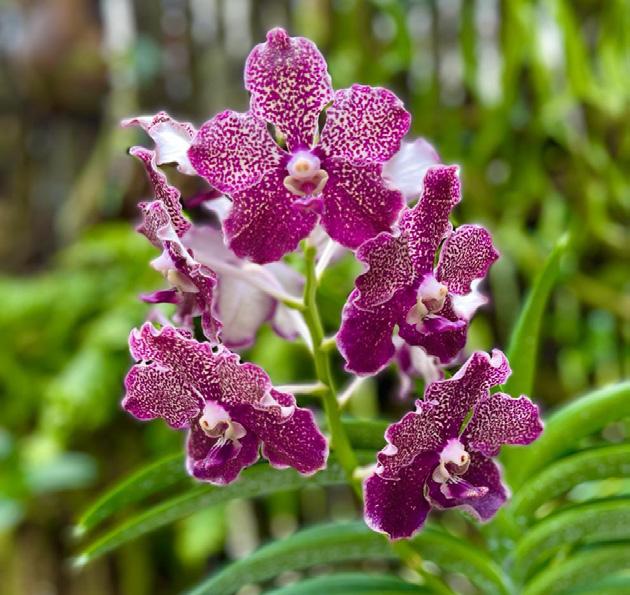
4 minute read
SHIFTING FROM THE SKY TO THE OCEAN
LOGISTICALLY SHIFTING FROM THE SKY TO THE SEA
The Covid-19 pandemic wreaked havoc on timely, efficient transport of cut flowers from Kenya to Europe and all but annulled efforts to open the North American market. This has turned fresh eyes onto sea freight – not really a new option as it has been in place and used by exporters of flowers and fresh produce for nearly fifteen years. So, is sea transport’s reduced carbon footprint and lower logistic costs the answer for the environment-conscious consumer?
Advertisement
AUTHOR: MARTA PIZAN. PHOTOS: MAERSK O This year’s Ifex show - Kenya’s leading horticultural trade show, which was back for its first in-person event in three years at Nairobi’s Oshwal Convention Centre in June – featured a Flowers by Sea conference. In the run-up to HPP’s second Flowers by Sea conference on 8 November 2022, FloraCulture International listened to the various speakers at the June conference. Here are our biggest takeaways.
FULL STEAM AHEAD
It is full steam ahead from sea freight. From a global perspective, maritime forwarding has increased tremendously over the past three years, by a factor of about 30. Horticultural growing powerhouse Kenya, however, still needs to optimise this mode of transportation. According to Jeroen van der Hulst from FlowerWatch, specific protocols have been developed for roses, carnations, and Chrysanthemums, whilst others are under development. There is good data on many flower varieties. However, floriculture in Kenya is a highly fragmented sector posing challenges mainly related to logistics. “The major obstacles to overcome are the variable box sizes complicating the filling of containers and securing a stable cold chain throughout 2ºC”, says Van der Hulst. Seaborne flowers also arrive in less-than-perfect facilities. For example, the port of Rotterdam and the flower auction could use a major overhaul, with the investment needed in power generators, cold rooms, trucks, and others. More money should also be put into the logistics when consolidating consignments to fill up a container between several exporters. Van der Hulst says: “You need full control of all post-harvest issues throughout the cycle. This includes pursuing excellence all the way through by following strict protocols often specific for each flower type, ensuring perfect cooperation between all

LOGISTICALLY SHIFTING FROM THE SKY TO THE SEA

stakeholders. Bear in mind that a minor mistake can blow up into a disaster; because transit takes five to six weeks, you will only find out long after your flowers have been shipped”.
UNINTERRUPTED COLD CHAIN
Competition between other flower suppliers in the international floriculture arena is fierce – Colombia and Ecuador, for example, have brought up sea freight close to perfection and are using it routinely. Yet, at best, only about 14 per cent of exports are being shipped by sea, with the rest still going by air which begs the question, why? With an uninterrupted cold chain being so critical, official on-farm inspection for pests and diseases, which avoids opening containers at the port/ airport, becomes of the utmost importance. A representative from KEPHIS (Kenya Plant Health Inspectorate Service) and Esther Kimani from PCPB (Pest Control Products Board) declared that in Kenya, this is not only possible but also already being carried out at the premises of various flower exporters. Clement Tulezi, CEO of the Kenya Flower Council, clearly described their significant role as connectors, linking all concerned in making sea freight successful. “This includes mobilising and messaging,” he said, referencing the need to inform government officials about what is needed to create successful sea freight distribution of cut flowers happen; providing information and training to growers, and even improving consumer perception as there are still some segments believing flowers coming by sea are not as fresh as those which are air freighted. According to Tulezi, maritime transport is the future, and the current momentum will make this trend unstoppable. “We aim to send 50 per cent of our flower exports by sea by 2030,” he said.
COSTS, SUSTAINABILITY, AND PROTOCOLS
Dennis Nyamweya, director of sales and marketing at Kuehne and Nagel, mentioned three main challenges to overcome before sea transport becomes a full-fledged reality: cost (considering possible product losses); sustainability (the carbon footprint needs to include the cold chain); and knowledge (developing specific protocols and following them closely to enable successful consolidation and delivery of a high-quality long vase-life product). Carl Lorenz from Maersk agreed with this analysis and mentioned that an additional challenge is the strain the ports around the world are under because of the Covid-19 pandemic. This stresses logistics, but the issues can certainly be solved. In wrapping up the conference, representatives from the Kenya Port Authority and the Ministry of Transport (Maritime Division) described efforts from the Kenyan Government to centralise export requirements, adopt electronic forms, and improve road infrastructure to make access to the Mombasa port more efficient and promote investment to modernise port facilities.











